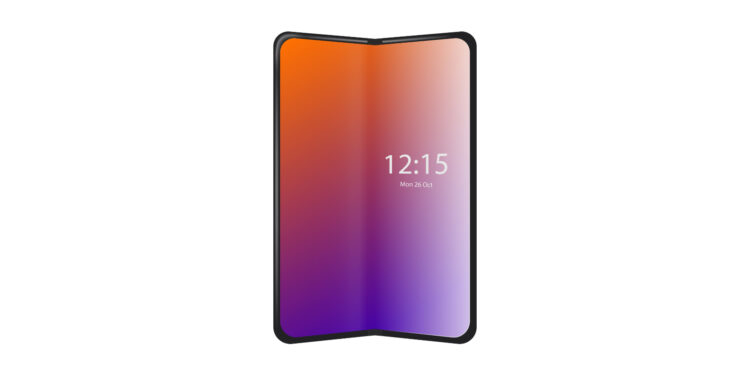The first foldable iPhone is expected to launch in 2026. After years of rumors and patent applications, evidence is mounting that Apple is preparing the so-called iPhone Fold. The goal is clear: Apple wants to offer a device that sets new standards in terms of hardware and workmanship in the foldable smartphone sector. Several leaks and analyst reports provide an initial overview of what could come.
Foldable smartphones aren't a new concept. Samsung, Huawei, and others have long had devices on the market. But many models suffer from the same problems: a visible crease in the display, a clunky design, or software compromises. Apple appears to be taking a different approach with the iPhone Fold. The device isn't just intended to function like a typical foldable, but like a real iPhone—just with more flexibility and new application possibilities. The information released so far suggests a model that specifically addresses the weaknesses of the competition.
Two displays: 7.8 inches inside, 5.5 inches outside
According to current reports, the iPhone Fold will have two displays. When unfolded, it will feature a 7.8-inch OLED inner display—almost as large as the original iPad mini. When folded, the device can be operated via a 5.5-inch outer display. This gives the Fold a wider size range than current iPhones, which range from 6.1 to 6.9 inches. The outer display is likely to appeal primarily to users who miss the discontinued iPhone mini with its 5.4-inch screen. The larger inner display will be designed primarily for multitasking, media consumption, and productivity use.
New design without visible folds
One of the biggest problems with current foldables is the crease in the internal display. Apple is said to have developed a new, crease-free display design for the iPhone Fold. The visible crease is largely eliminated or significantly less noticeable than in previous models. The casing follows a "book-fold" design, similar to Samsung's Galaxy Z Fold. The most striking feature of the design is its thinness. When folded, the device is said to be 9 to 9.5 millimeters thick. When unfolded, it is only 4.5 to 4.8 millimeters—thinner than the expected iPhone 17 Air.
Four cameras: rear and front cameras for both modes
The iPhone Fold is said to be equipped with a total of four cameras:
- Two rear cameras with 48 megapixels each
- A front camera for the external display
- A front camera for the interior display
It's not yet clear whether the second rear camera will be an ultra-wide-angle or telephoto lens. Both are possible, depending on the focus on photography or zoom. The front cameras could use Apple's new 24-megapixel technology, which is also used in the iPhone 17 series. A punch-hole design is expected for the internal display to integrate the camera as discreetly as possible.
Touch ID instead of Face ID
While Apple's flagship models have relied on Face ID for years, the iPhone Fold is said to use a different solution: Touch ID in the side button. The reason is likely practical. Two Face ID systems—one for the inside, one for the outside—would take up a lot of space and incur additional costs. Apple solves this problem in a space-saving way by incorporating Touch ID into the power button. The concept is already familiar from devices like the iPhone SE or the iPad Air, where Touch ID is also located in the side button. For a foldable device with switching modes, this is a logical decision.
Titanium in the case and hinge
Another technical detail concerns the material. While Apple is reportedly using aluminum or stainless steel again for the iPhone 17 Pro, the iPhone Fold is said to use titanium – both in the hinge and the frame. Titanium is light, strong, and durable, making it ideal for a device subject to mechanical stress like a foldable. The hinge, in particular, is considered a weak point in foldable smartphones. Apple aims to use titanium to extend its lifespan and minimize its susceptibility to damage.
More than hardware: The role of software in the iPhone Fold
It's still unclear how Apple will design the iPhone Fold's software. The large internal display theoretically offers space for split-screen functionality, advanced multitasking options, or new gesture controls. iOS would have to be adapted or expanded for this. Apple is known for harmonizing hardware and software—in this case, the decisive factor is how convincingly the user interface is implemented. The iPhone Fold could be a turning point for foldable smartphones—provided Apple delivers not only powerful hardware but also a sophisticated user experience. The best products for you: Our Amazon storefront offers a wide selection of accessories, including those for HomeKit. (Photo by sabelskaya / Bigstockphoto)
- iPhone Fold: Why Apple's foldable phone is ahead of the competition
- iPhone Fold coming in 2026 – second generation follows in 2027
- Foldable iPhone to arrive in 2026 – what is known so far
- Apple's foldable iPhone: design, technology and launch
- Foldable iPhone: Thin design, strong battery life
- Apple is more successful than ever – thanks to Tim Cook





